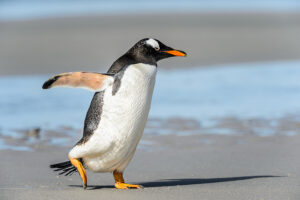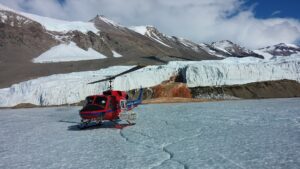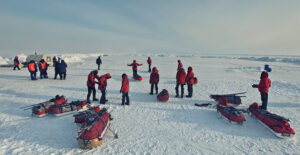Crossings
Gareth Andrews and Richard Stephenson
Unsurprisingly, Andrews and Stephenson have decided to end their expedition at the South Pole. “We now find ourselves with not enough time or supplies to go more than a few days beyond the South Pole and feel the correct decision is to finish there,” they wrote on day 58 of their expedition.
It might have taken until day 58 to announce, but the decision had been on the cards for some time. They set off a week later than planned because of weather delays and then started slowly from Berkner Island.
Though they ramped up their ski time and daily distances, they hovered around 20km most days, well short of the daily distance they would need to cover the 2,023km in the 66 days they had allocated. As a result, a complete crossing had been a logistical impossibility for a couple of weeks.
Andrews and Stephenson have 185km to go to the Pole. They are hoping that the sastrugi will ease up now that they’ve passed 88°.
Preet Chandi
Preet Chandi started from Hercules Inlet rather than Berkner Island but has found herself in the same predicament as Andrews and Stephenson. Chandi never quite got going, struggling in the soft snow and then the sastrugi, she hasn’t managed enough kilometers per day to make it much further than the South Pole.
She made the Pole on December 10 and unlike Stephenson and Andrews, Chandi has decided to push on as far as she can. She apparently has a “cut-off date” of January 22 but will continue toward the coast till then.

Preet Chandi at the South Pole (note that photos sent from Antarctica tend to be very low quality). Photo: Preet Chandi
“It has been really tough getting here this year. I have been skiing between 13 and 15 hours a day, averaging five hours of sleep, and not getting the mileage I want with the tough conditions,” Chandi wrote from the Pole.
Six-person Australian team
Rounding out a clean sweep of difficulties for the teams attempting Antarctic crossings, the Australian team revealed that two of their members have dropped out of the expedition.
Emily Chapman and Tim Geronimo aborted at Thiel’s Corner, but the team has only just revealed the news. “We wanted to give both the time and space to process their decision and head home to recover,” they wrote in a recent update.
The four remaining team members have just passed 89° and report no sastrugi but fine, sticky snow. Like the two expeditions above, it won’t be possible for the team to complete their intended route (continuing from the Pole to the Ross Ice Shelf) in the 72 days they budgeted. There has been no announcement but we expect that they’ll end their expedition at the South Pole.
Hercules Inlet to the South Pole
The pair have had some kit troubles, with broken ski bindings and then a broken zipper on Vermas’s shell pants. They’ve made the necessary repairs and have soldiered on, approaching 89° and enjoying the flat terrain, though they also report sticky snow.
Today, Mateusz Waligora made the Pole. It wasn’t the quickest journey, clocking in at 58 days to cover 1,250km, but Waligora showed impressive mental fortitude and provided consistently entertaining updates!

Mateusz Waligora at the South Pole. Photo: Mateusz Waligora
Ben Weber isn’t far behind; yesterday he had just 31km to go. He is enjoying the flat conditions on the approach to the Pole after a few tough days.
Norwegian Hedvig Hjertaker had roughly 50km left yesterday. She seems to have struggled through the last few days, with some unexplained “technical issues” but is hanging in there. Hjertaker has been on the ice for 47 days.
Norwegians AK Gluck-Teigland and Kjartan Bergsvag started strong and kept up the pace right to the finish. They arrived at the Pole on January 6. No dramas from these two, just solid 35km+ days from start to finish.

AK Gluck-Teigland and Kjartan Bergsvag check in from the South Pole. Photo: AK Gluck-Teigland and Kjartan Bergsvag
Speed record
In the end, it wasn’t close. Caroline Cote smashed the women’s Hercules Inlet to South Pole speed record. Initially, her time was put at 34 days, 2 hours, and 53 minutes by her team, only to later be corrected to an even faster time: 33 days, 2 hours, and 55 minutes.
Cote surpassed Swede Johanna Davidsson’s 2016 effort of 38 days and 23 hours.
Cote was greeted at the finish line by her husband Vincent Colliard, who had just led a last-degree expedition to the pole, and by British explorer Hannah McKeand. Mckeand had previously held the record, setting a time of 39 days, 9 hours, and 33 minutes in 2006. She is now the general manager of the Amundsen-Scott base.
Guided groups from the Messner Start
On Dec. 11, they flew back to Union Glacier camp and are looking forward to a proper shower and “not squatting over a plastic bag.”






